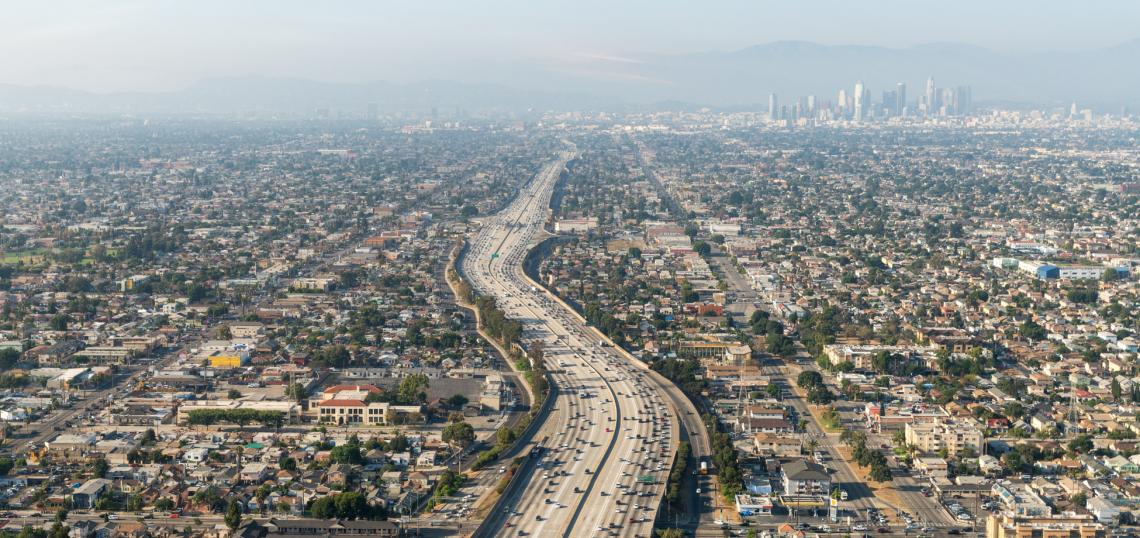Two years ago, the Metro Board of Directors voted to explore strategies to ease the snarling traffic that famously plague Los Angeles - including congestion pricing. Now, in a post to The Source, the transportation agency is lifting the veil on four early concepts which could be included in its traffic reduction study.
 Areas of highest traffic congestion in Los Angeles CountyMetro
Areas of highest traffic congestion in Los Angeles CountyMetro
Congestion pricing, a practice in which drivers are charged a toll to regulate traffic congestion in high-demand areas, can take a variety of forms. Metro staff previously pointed to three possible ways that it could be implemented in Los Angeles County, including:
- VMT pricing, where a fee is charged per mile driven by a vehicle;
- Cordon pricing, in which a fee is charged for entering a certain area; and
- Corridor pricing, where fees are charged for access to heavily-trafficked roads or highways.
The four concepts introduced by Metro focus on cordon and corridor pricing, and target some of the Los Angeles region's most notorious traffic choke points. They include:
The Santa Monica Mountains
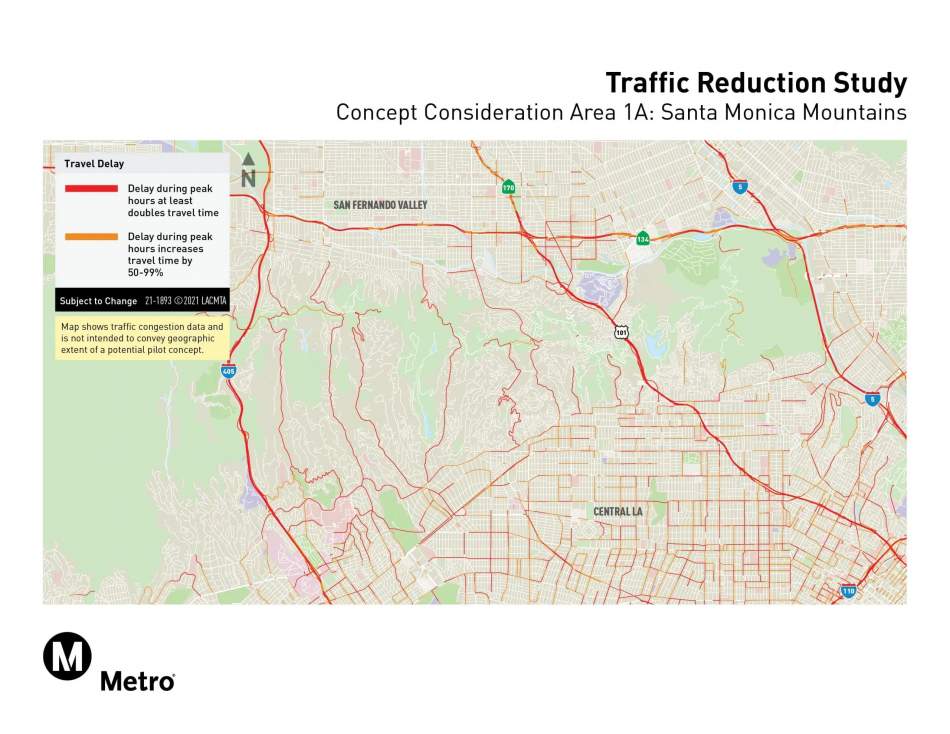 Concept Consideration Area 1A: Santa Monica MountainsMetro
Concept Consideration Area 1A: Santa Monica MountainsMetro
In a region famed for its seemingly endless sprawl, the Santa Monica Mountains are one of the few geographic impediments to development - and also vehicular traffic. Two of the main arteries through the mountain range - the 101 and 405 freeways - ranked among the 10 most congested corridors in the United States in a study released in 2020.
Metro is exploring two concepts in this area. "One option could be tolling between I-405 and I-5. Another option would explore a smaller area between US 101 and I-5," explains the post in The Source.
Outside of the congestion pricing study, Metro will also receive funding through countywide sales tax approved under Measure M to expand its ExpressLanes network to the 405's existing carpool lanes. ExpressLanes, which are a more modest form of congestion pricing, have already been implemented on the Harbor and San Bernardino freeways.
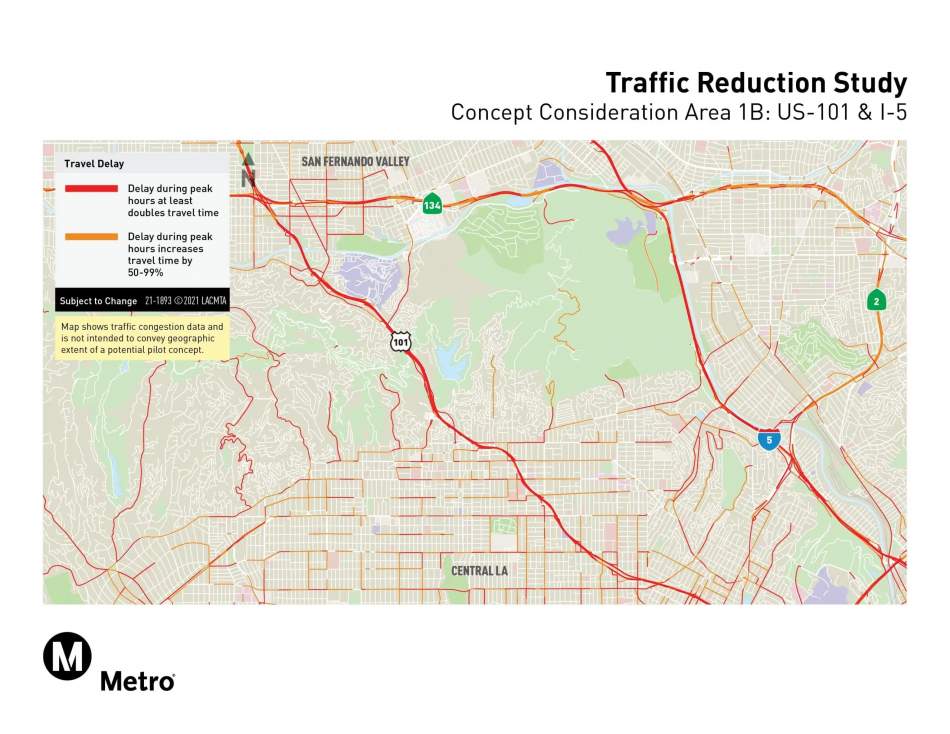 Concept Consideration Area 1B: US-101 & I-5Metro
Concept Consideration Area 1B: US-101 & I-5Metro
Transit alternatives to the Sepulveda Pass are also in the works - though at a more distant date. The Measure M expenditure plan includes funding for a new rail line parallel to the 405, which would eventually intersect with the D (Purple) Line's extension to Westwood.
Metro already operates a rail line parallel to the 101 - the A Line subway between North Hollywood and Union Station.
Downtown Los Angeles
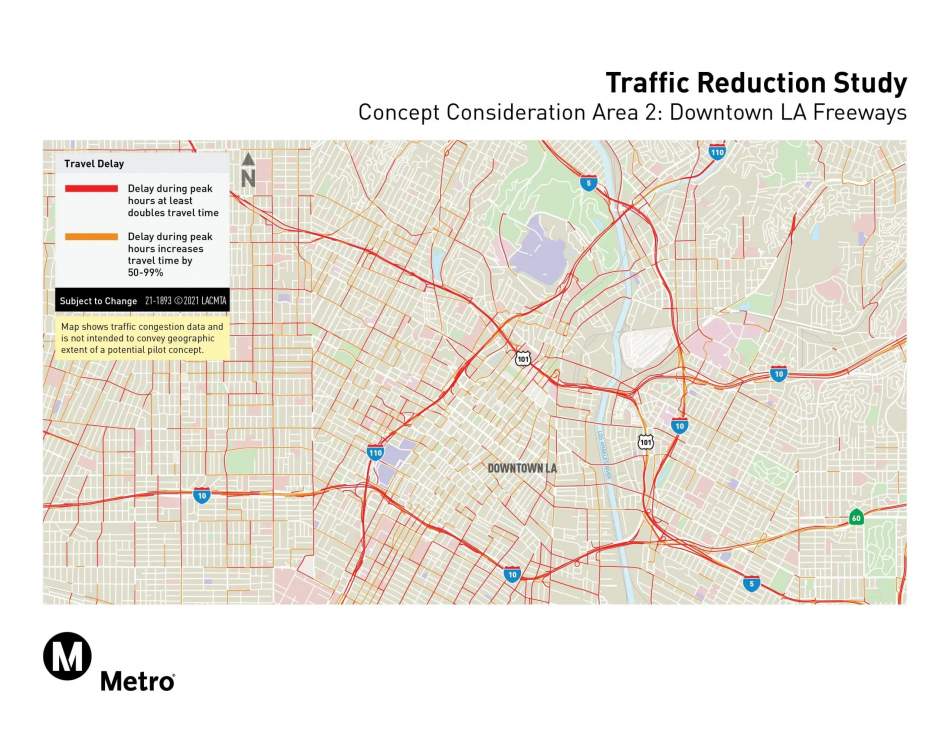 Concept Consideration Area 2: Downtown LA FreewaysMetro
Concept Consideration Area 2: Downtown LA FreewaysMetro
Because of its location at the geographic heart of Los Angeles County, many of the region's freeways already converge on Downtown, resulting in heavy traffic congestion.
According to the post in The Source, Metro could study strategies to manage traffic on those freeways - which include the 101, the 5, and the 10 - while also adding other transportation improvements to the area. Alternatively, a cordon could be implemented around the perimeter of Downtown, where drivers would be charged to enter.
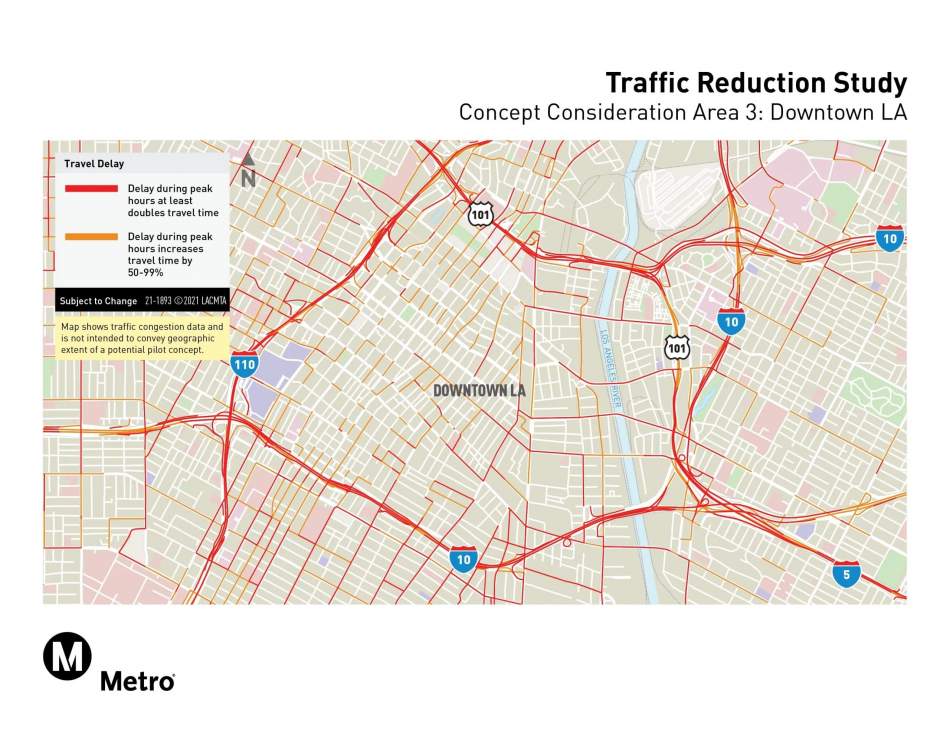 Concept Consideration Area 3: Downtown LAMetro
Concept Consideration Area 3: Downtown LAMetro
In addition to the regional freeway system, Downtown is also the heart of Southern California's rail network, with most Metrolink lines serving Union Station, and four Metro Rail lines traveling through 7th Street/Metro Center Station in the Financial District.
The neighborhood has also become the testing grounds for many of Metro's new initiative - particularly the implementation of dedicated bus lanes along major corridors such as 5th Street, 6th Street, Flower Street, Grand Avenue, and Olive Street.
The I-10 Corridor
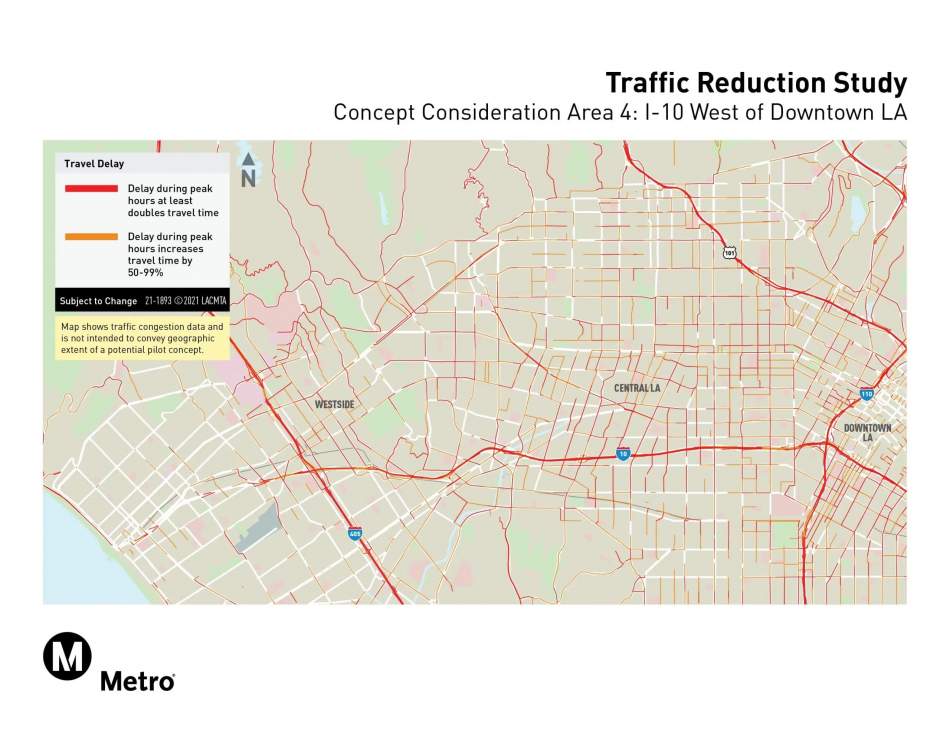 Concept Consideration Area 4: I-10 Freeway West of Downtown LAMetro
Concept Consideration Area 4: I-10 Freeway West of Downtown LAMetro
The 10 Freeway - the main artery connecting the jobs rich Westside with the rest of Los Angeles - has also emerged as a candidate for congestion pricing.
"There’s heavy congestion between downtown L.A. and communities to the west, including Santa Monica, Culver City and West L.A. To mitigate potential spillover traffic, the I-10 and parallel arterials will be included in the analysis," says The Source.
Alternatively, as LA Weekly once quipped in a satirical April 1, 2015 article, Los Angeles could simply vote to move Santa Monica "closer."
Next steps
This summer, the Metro Board is scheduled to vote on which concept to continue studying - a process which would continue through Spring 2022. At that point, the Board would then decide on whether to implement a pilot program in partnership with one or more cities. Should the Board of Directors vote to implement a pilot, Metro would be required to seek federal and state approvals for the project, which would be launched in 2025.
Revenue generated through congestion pricing would be reinvested into the communities which surround the pilot areas, potentially going toward improved transit service, incentives for carpooling, and active transportation infrastructure.
Metro is holding three community meetings regarding the traffic reduction pilot program during February:
Wednesday, February 10, 6 – 7:30 p.m.
Click here to register for this meeting
Tuesday, February 16, 11:30 a.m. – 1 p.m.
Click here to register for this meeting
Saturday, February 27, 1 p.m. – 2:30 p.m.




